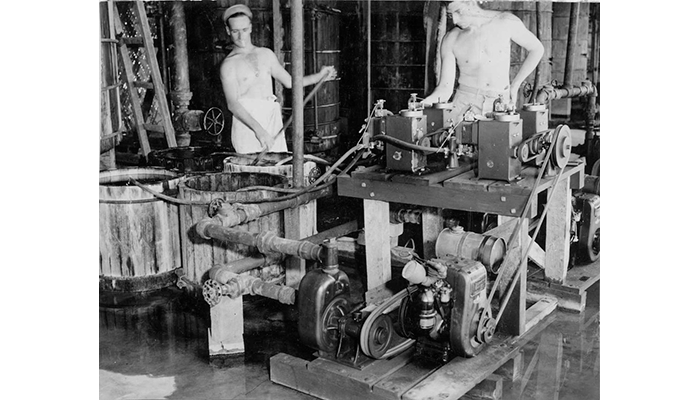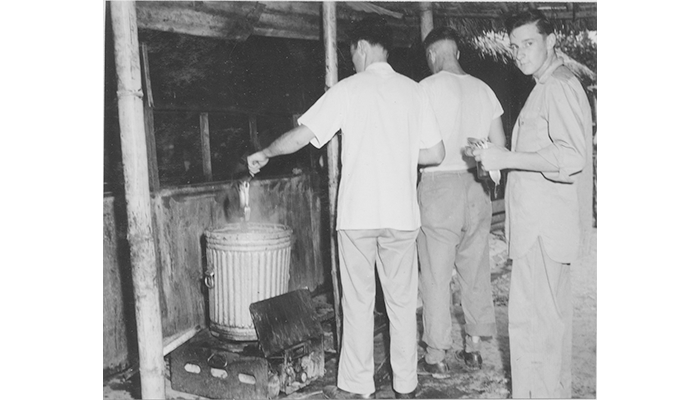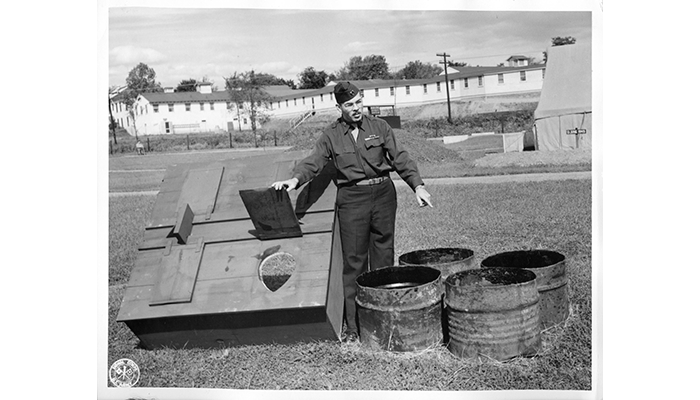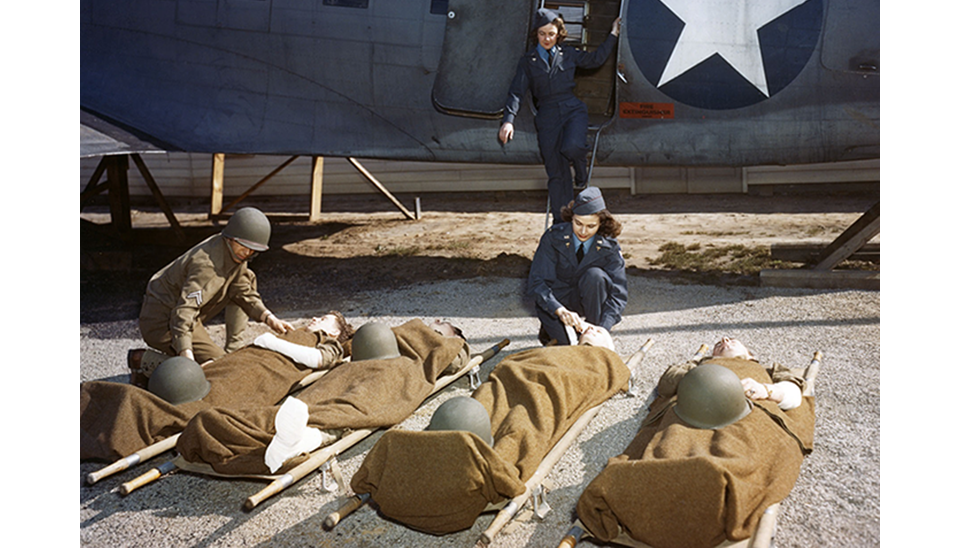After World War I, "Thirty-four percent of all registrants were rejected by examining boards on account of physical defects and diseases. In large measure, these defects and diseases could have been prevented had proper attention been given to them," noted the 1919 Annual Report of the Surgeon General of the Public Health Service. Highlighting sanitation and public health problems during wartime and how regional diseases posed a threat to military encampments, the report also emphasized the health concerns a close-quartered military force posed to the local civilian population, and vice versa. With lessons learned, at the beginning of World War II, the military used a visual health campaign to educate and prepare service members against the spread of disease when abroad.
During WWI, large groups of service members in encampments were a prime breeding ground for germs and diseases, especially because of a lack of health and sanitation guidelines. While sewage and garbage disposal systems were in place, they could not keep up with the tens of thousands of people. Similarly, there were inadequate procedures for sanitation, and community water-supply systems became contaminated. The lack of a sufficient health and sanitation system led to high levels of transferrable diseases like typhus, smallpox, and influenza which overwhelmed local health officials.
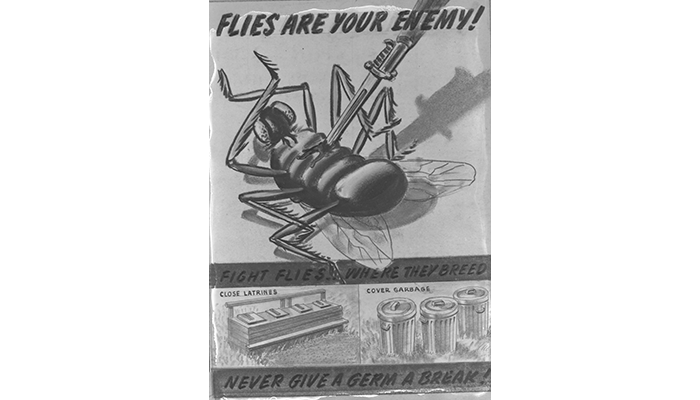
Public health poster from World War II warning service members about the germs flies carry. Illustrated by Capt. Hack. (Reeve 84392-9)
Due to these conditions, with the onset of WWII, emergency health and sanitation programs and education were emphasized. Along with a variety of media, like exhibitions, lectures, films, and radio talks, public health posters educated service members on hygiene, sanitation, germs, and carriers of diseases—climate and insects were not as much of an issue during WWI, but the Pacific Theater of WWII presented many challenges related to tropical disease.
Posters encouraged service members to bathe regularly, to wash their hands before they ate, and to be wary of flies as they can transfer germs on to your food. Likewise, posters noted proper sanitation techniques like covering garbage cans, closing latrine lids, and cleaning up dirty areas, especially places where food would be cooked and ingested.
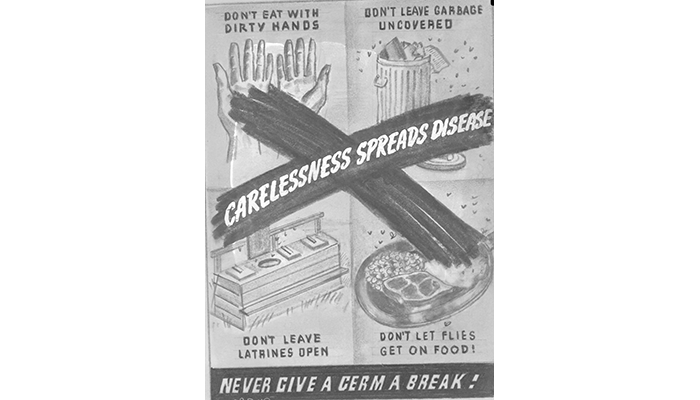
A public health poster from World War II reminding service members to clean their hands, close latrines and garbage cans, and to protect food from flies. Illustrated by Capt. Hack. (Reeve 84392-16)
The museum's Medical Illustration Service of the Army Institute of Pathology aided the effort in producing public health posters. During WWII, the Surgeon General directed the organization of nine art departments from the medical museum of the Army Institute of Pathology (the predecessor of the National Museum of Health and Medicine) to operate in overseas theaters. Photographers, artists, and administrative personnel were asked to generate medical illustrative material for information and training purposes. Their results, including public health posters, provide a lens into the military effort to control the spread of disease and educate troops on hygiene and sanitation.
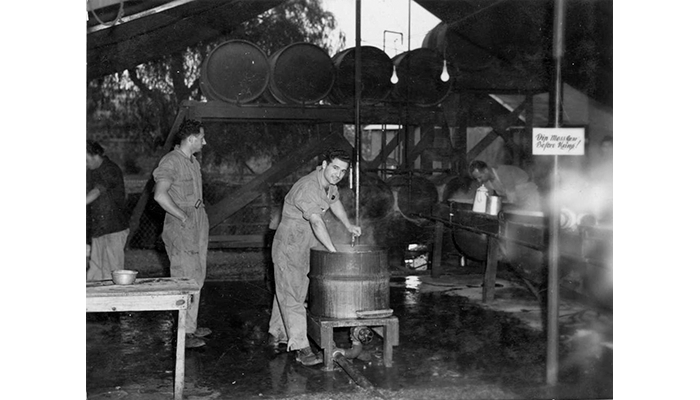
Public health posters went out of popularity by the Korean War possibly due to postwar industrialization when public health became a central concern of government policy. Some public health posters were produced during the Vietnam War but, for the most part, the medium for public health information dissemination changed and began revolving around movies and magazine highlights. Also, likely due to a more stable public health platform, service members were better trained and more educated about health concerns during wartime than their predecessors.
Our collection of WWII public health posters from the Otis Historical Archives is available to researchers by appointment. Also, as a way to highlight these collections, from February 3 through 7, 2020, we are participating in "Color Our Collections." This campaign started by the New York Academy of Medicine encourages cultural institutions to transform their collections into downloadable coloring books. The above posters and more are available to download here.
Resources
Annual Report of the Surgeon General of the Public Health Service of the United States for the Fiscal Year 1919. Washington, D.C.: Government Printing Office, 1919. https://www.va.gov/vetdata/docs/PHSFY1919.pdf
Mountin, Joseph and Edward Kovar. Emergency Health and Sanitation Activities of the Public Health Service During World War II. Washington, D.C.: Government Printing Office, 1949.
Reeve, Roy. "Medical Illustration Service of the Armed Forces Institute of Pathology." 1953.
U.S. National Library of Medicine. "Public Health and War." History of Medicine. Last modified August 18, 2014. https://www.nlm.nih.gov/hmd/digicolls/phfgtw/essay.html
Relevant Links:
Visual Culture and Public Health Posters
https://www.nlm.nih.gov/exhibition/visualculture/venereal.html



